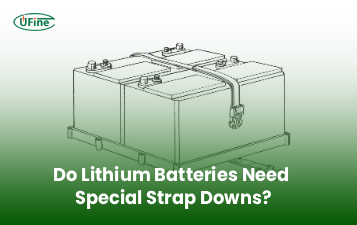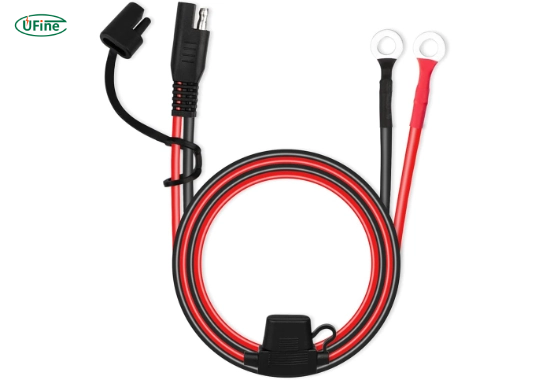
- Part 1. What is a battery terminal extension?
- Part 2. Why do commercial lithium systems need terminal extensions?
- Part 3. Types of battery terminal extensions explained
- Part 4. Comparing key extension designs: L-shape vs. straight
- Part 5. How to choose the right battery terminal extension
- Part 6. Copper vs. brass: Which is better for lithium battery terminal extensions?
- Part 7. Use cases in commercial lithium battery systems
- Part 8. Best practices for installation
- Part 9. Maintenance and inspection schedule
- Part 10. Recommended brands and sourcing tips
- Part 11. FAQs about battery terminal extension
Lithium battery terminal extension options play a crucial role in high-performance energy systems, especially in commercial, industrial, and advanced DIY setups. What are the best types of lithium battery terminal extensions, and how do they compare? The best option depends on your installation needs, current load, space constraints, and terminal configuration. This guide covers everything from L-shape vs. straight extensions, copper vs. brass materials, and screw-in vs. clamp-on designs, with a focus on large-scale lithium battery systems.
Whether you’re managing a solar farm, outfitting a commercial van fleet, or installing lithium batteries in a marine or industrial environment, making the right choice in terminal extensions can significantly improve safety, efficiency, and maintenance.
Part 1. What is a battery terminal extension?
A battery terminal extension is a conductive component that extends or adapts the terminals of a lithium battery. It serves multiple purposes:
- Adds length to the terminal for easier access
- Allows more than one cable to connect to the same terminal
- Adapts one type of terminal (like a stud) to work with another (like a ring or clamp)
In high-current lithium setups, like those used in mobile power stations, solar banks, or electric vehicles, these extensions are not optional; they are essential for safe and scalable connections.
Part 2. Why do commercial lithium systems need terminal extensions?
In commercial lithium battery systems, terminal extensions are critical for several reasons:
- Heavy load distribution: High-current systems often require parallel cables for inverters, BMS units, and charge controllers.
- Modular scalability: Extensions make it easier to modify or expand the system without rewiring the entire battery bank.
- Improved serviceability: Accessible terminals reduce downtime during maintenance or inspection.
- Enhanced safety: Extensions help reduce clutter and cable strain, lowering the chance of overheating or failure.
For example, a fleet of electric delivery vans using 48V lithium batteries will benefit from terminal extensions that simplify diagnostics and allow for additional monitoring equipment.
Part 3. Types of battery terminal extensions explained
There are several types of battery terminal extension products available, each engineered for different use cases and form factors. Here’s a breakdown:
1. Straight terminal extensions
Straight extensions offer a linear path from the battery terminal. These are common in simple configurations with direct connections.
Use case: Ideal in rack-mounted lithium battery arrays where space is not an issue.
2. L-shape terminal extensions
L-shaped extensions bend at a 90-degree angle, making them excellent for tight enclosures or wall-mounted battery banks.
Use case: Perfect for marine and van installations where space is at a premium.
3. Screw-in terminal adapters
These are threaded extensions that screw into stud terminals, converting them into clamp or ring post terminals.
Use case: Best for batteries with M6 or M8 studs that need ring or fork terminal compatibility.
4. Clamp-on terminal extensions
Clamp-on types attach over existing terminals and offer quick, tool-free installation.
Use case: Great for temporary setups, or where frequent disconnections are needed.
5. Dual-post or multi-tap extensions
These advanced extensions offer multiple posts or threaded holes for connecting several cables.
Use case: Essential in commercial solar arrays or mobile workstations with multiple high-current components.
Part 4. Comparing key extension designs: L-shape vs. straight
Choosing between L-shaped and straight battery terminal extensions depends on your installation space and cable routing.
| Feature | L-Shape Extensions | Straight Extensions |
|---|---|---|
| Space Efficiency | High | Low |
| Ease of Access | Good in tight areas | Best in open layouts |
| Cable Management | Better for angled routing | Best for direct lines |
| Common Use | Vans, marine, wall-mounted batteries | Racks, industrial cabinets |
In confined commercial enclosures, L-shape extensions improve accessibility and reduce cable stress. Straight extensions work better in open environments.
Part 5. How to choose the right battery terminal extension
When selecting a battery terminal extension for lithium systems, consider these professional criteria:
- Terminal Type Compatibility: Match the extension to your battery’s terminal (stud, SAE, bolt-down). Use screw-in adapters for stud terminals or clamp-on types for SAE posts.
- Current Rating: Choose extensions rated for your system’s maximum continuous current. For commercial-scale lithium batteries, this often exceeds 200A.
- Material Quality: Opt for oxygen-free copper or marine-grade brass to ensure conductivity and corrosion resistance.
- Connection Form Factor: Use L-shape extensions in tight enclosures and straight types in open areas. Consider multi-tap designs for systems needing multiple outputs.
- Installation Environment: For marine or outdoor systems, corrosion resistance is key. Use coated brass or sealed copper terminals.
- Mounting and Torque Requirements: Ensure the extension can be torqued to spec without deformation. Commercial-grade extensions should allow secure mounting and reuse.
Artikel Terkait: The Truth About Battery Hookup
Part 6. Copper vs. brass: Which is better for lithium battery terminal extensions?
Both copper and brass are widely used in terminal extensions, but they serve different needs.
Copper Extensions
- Conductivity: 100% IACS (International Annealed Copper Standard)
- Heat Resistance: Excellent
- Corrosion Resistance: Moderate
- Cost: Higher
- Best for: High-current systems like inverters, large solar banks, or EV batteries.
Brass Extensions
- Conductivity: 28–40% of copper
- Heat Resistance: Good
- Corrosion Resistance: Excellent
- Cost: Lower
- Best for: Marine environments, automotive applications, or lower-current accessory connections.
For critical commercial lithium battery setups, copper is the preferred choice due to its superior current-handling ability. Brass, however, is often used in harsh environments where corrosion resistance is more important than maximum conductivity.
Part 7. Use cases in commercial lithium battery systems
Terminal extensions are essential in various commercial industries:
Fleet vehicle electrification
EV fleets often require modular battery banks. Terminal extensions allow centralized cable routing and easy diagnostics.
Telecom and server backup systems
In UPS and backup systems installed in narrow racks, L-shaped and screw-in extensions make maintenance easier.
Solar energy farms
Multi-bank lithium battery arrays need dual-post or bus bar extensions to handle multiple charge/discharge sources.
Marine battery systems
Corrosion-resistant brass L-shape extensions allow clean installs in compact engine compartments.
Mobile command centers
Police, fire, and disaster response vehicles use lithium batteries with clamp-on or multi-tap extensions to power radios, lights, and tools.
Part 8. Best practices for installation
Proper installation of battery terminal extensions ensures system reliability and safety.
- Disconnect all power before making changes.
- Clean terminals and extension surfaces with a wire brush.
- Use dielectric grease to prevent corrosion.
- Torque bolts to recommended specs using a torque wrench.
- Use heat-shrink tubing or terminal boots for exposed connections.
- Label cables and connections for future maintenance.
Always follow manufacturer guidelines, especially when working with lithium iron phosphate (LiFePO4) batteries, which are sensitive to connection quality.
Part 9. Maintenance and inspection schedule
To keep your battery terminal extensions in top condition:
- Inspect monthly for signs of corrosion or overheating.
- Re-tighten connections every 6 months.
- Replace damaged lugs immediately.
- Clean terminals with contact cleaner annually.
- Check torque as part of routine maintenance.
In commercial applications, log inspections and repairs for warranty and compliance documentation.
Part 10. Recommended brands and sourcing tips
When sourcing battery terminal extensions for commercial or industrial lithium systems, reliability is key. Here are some trusted manufacturers:
- Blue Sea Systems – Marine and high-current applications
- Victron Energy – Premium solar and off-grid systems
- WindyNation – Budget solutions for mobile and RV power
- IOTA Engineering – Telecom and UPS-grade accessories
- Renogy – Residential and light commercial solar
Part 11. FAQs about battery terminal extension
What is the best battery terminal extension for high-current applications?
Copper straight bolt-on extensions are ideal for high-current setups due to their low resistance and high conductivity.
Can I mix copper and brass terminal extensions in one system?
Yes, but be cautious. Use anti-corrosion paste and isolate metals to prevent galvanic corrosion.
Are L-shaped extensions safe for tight compartments?
Absolutely. They are designed to reduce strain on cables and improve access in tight spaces.
How many devices can I connect to one terminal extension?
This depends on the extension’s design. Multi-tap or dual-post extensions can safely support 3–5 outputs, but always check current ratings.
Should I use a fuse with terminal extensions?
Yes. Always place a fuse or circuit breaker within 7 inches of the battery terminal to protect the wiring system.
Related Tags:
More Articles

Do Lithium Batteries Require Special Strap Downs? (Safety + Vibration Control)
Discover why lithium batteries require special strap downs to prevent vibration damage, terminal stress, and internal component issues.
Battery Strap Down Safety Tips: Preventing Vibration Damage and Terminal Stress
Follow these expert battery strap down safety tips to prevent vibration damage, terminal stress, and ensure LiFePO4 battery longevity.
How to Choose a Good 18650 Battery with Reliable Quality?
Battery quality defines performance and safety. Ufine Battery shares how to source good 18650 batteries and avoid unstable suppliers.
Can I Use a Universal Battery Strap Down on LiFePO4 Batteries? (Compatibility Guide)
Learn whether universal battery strap downs are compatible with LiFePO4 batteries, and how to install them safely for vibration control.
Battery Strap Down vs Battery Hold-Down Bracket: What’s the Difference?
Compare battery strap downs and hold-down brackets. Learn key differences, installation tips, and which is safer for lithium batteries.



